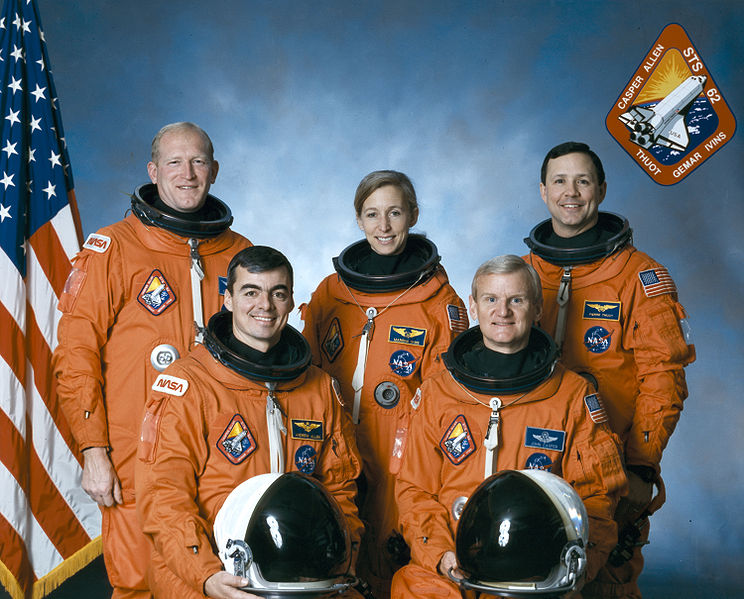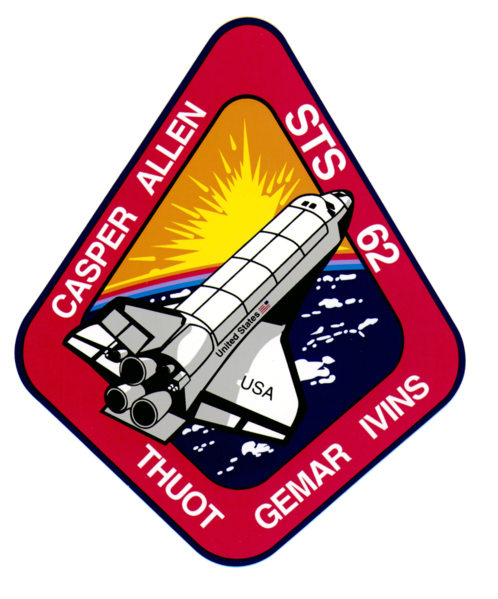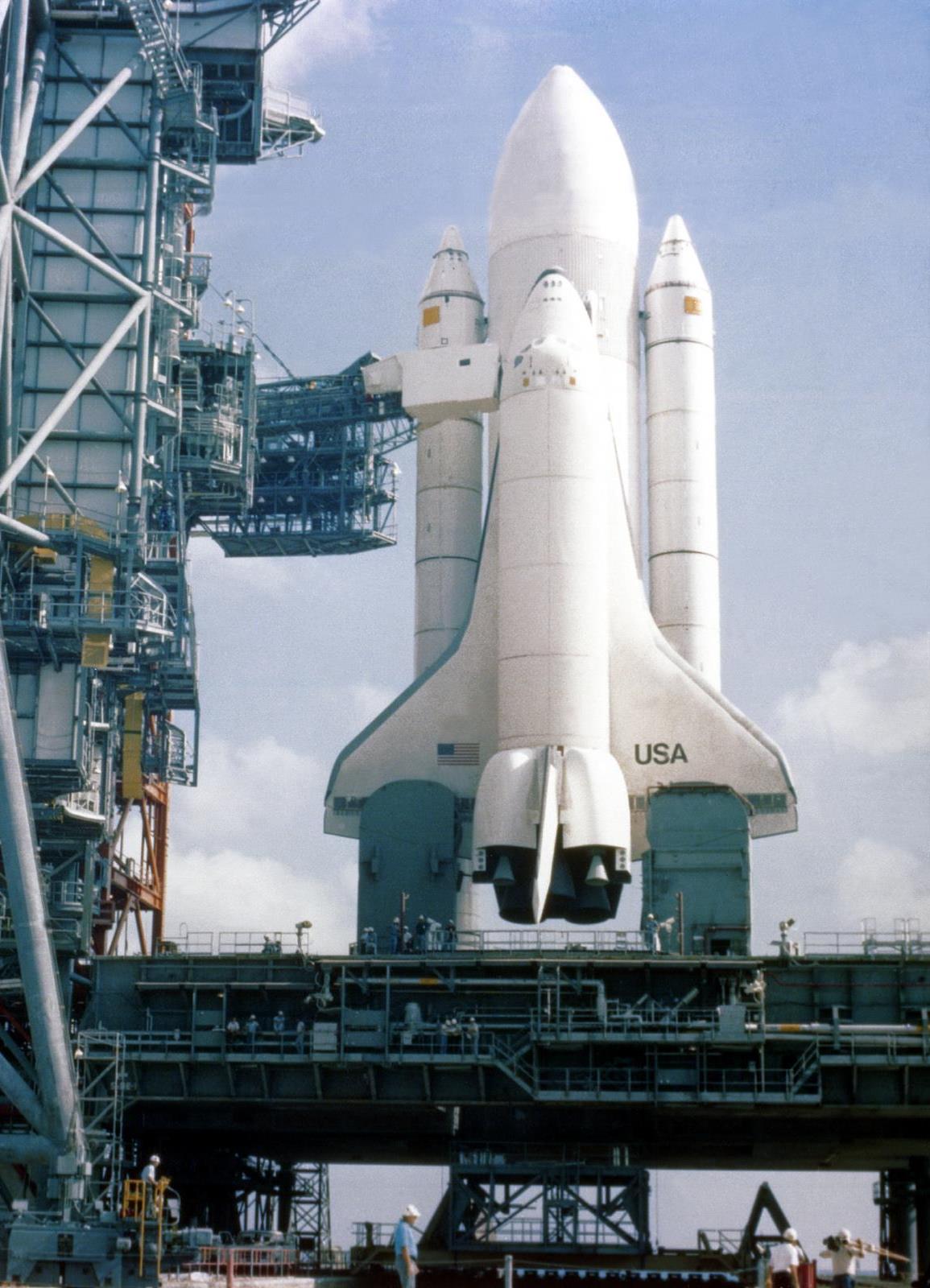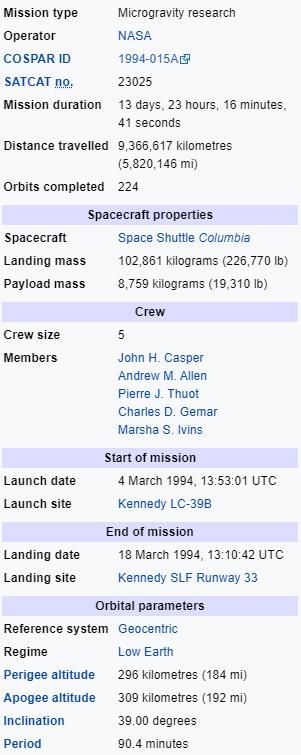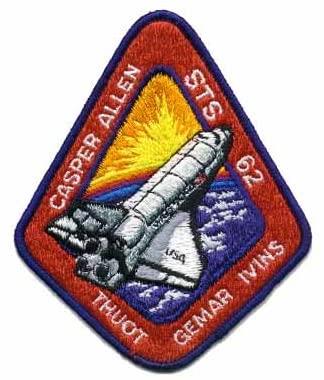(Third Space Flight)
STS-62 was a Space Shuttle Programme mission flown aboard Space Shuttle Columbia. The primary payloads were the USMP-02 microgravity experiments package and the OAST-2 engineering and technology payload, both in the orbiter's cargo bay. The two-week mission also featured a number of biomedical experiments focusing on the effects of long duration spaceflight. The landing was chronicled by the 1994 Discovery Channelspecial about the Space Shuttle Program and serves as the show's opening. AC.F. Martinbackpacker guitar was on the shuttle during the mission
A free template by Lucknowwebs.com for WYSIWYG WebBuilder 8
Study
Research
Main Index
Space Cosmology
Science Research
*
About
Science Research
Science Theories
Desk
Site Map
BookShelf
Copyright © by Nigel G Wilcox · All Rights reserved · E-Mail: ngwilcox100@gmail.com
Designed by Nigel G Wilcox
Powered By AM3L1A
Pages within this section: USA Shuttle Mission Flights
STS-62
Pages within this section:
The Space Shuttle Missions
Astronauts:
STS-62
61m
M
8
SM
Sub-Menu
menu
-
62
62a
63
64
65
66
67
Command Pilot:
John H. Casper
Pilot:
Andrew M. Allen
(Second Space Flight)
Pierre J. Thuot
(Third Space Flight) Mission Specialist 1
Marsha S. Ivins
(Third Space Flight) Mission Specialist 2
Charles D. Gemar
(Third Space Flight) Mission Specialist 3
14 Day mission covering many highlights
Flight Day One (Friday, March 4) consisted of ascent operations and reconfiguration of the orbiter in order to support orbital operations, an OMS-2 burn to circularize Columbia's orbit to a 160-by-163-nautical-mile (296 by 302 km) orbit, USMP-2 activation, PSE operations, APCG activation, CPCG operations, RMS checkout, DEE operations, CGBA activation. The payload bay doors were opened at 10:26 am EDT.
Higher than normal pressures were detected and then returned to normal after engineers powered up heaters on the unit. The APUs provided hydraulic power to operate key landing systems and only one of the three was needed for a successful landing. However, flight rules called for a shortened mission in the event a single unit was lost.
Jumping to Day 14 - The Flight Day 14 (Thursday, March 17) plan called for a hot firing of the Reaction Control System (RCS) in preparation for the return flight, flight control system checkout, cabin stowage, SSBUV deactivation, and a final run in the Lower Body Negative Pressure device for Gemar. The crew was awakened for the 14th day of the flight to the song "Living in Paradise" by the Brothers Cazimero.
The crew performed final checks of their spacecraft, wrapped up their experiments and began packing their bags in preparation for the return to Earth. Columbia was scheduled to fire its OMS engines at 6:18 am CST to begin a descent that would culminate with a touchdown on the Kennedy Space Centre Shuttle Landing Facility runway at 8:09 am EST. Casper and Allen test-fired Columbia's 38 primary steering jets early that morning as planned, finding them all in good shape for the trip home. Later, Casper and Allen each spent time practicing landings using a portable computer simulation designed for the Shuttle. During this time, Gemar spent four hours in the Lower Body Negative Pressure Device (LBNP).
Ivins powered down Columbia's mechanical arm and latched it in its cradle for the trip home, and Thuot completed operation of the two protein crystal growth experiments on board, preparing them for entry and landing.
Several final observations of the Shuttle glow effect, a phenomenon created as atomic oxygen and other gases impact the spacecraft, were conducted. Columbia performed another series of spins for the investigations that included more releases of nitrogen gas from payload bay canisters.
The final few hours of the crew's day were devoted to stowing gear and preparing Columbia for the mission's end. Before re-entry, Columbia was in an orbit with a high point of 257 kilometres (139 nmi) and a low point of 194 kilometres (105 nmi).
The Flight Day 15 (Friday, March 18) plan called for deorbit preps and a deorbit burn of 209 ft/s (63.7 m/s) at MET 13/22:04 with a planned landing at KSC. Landing occurred on Runway 33 of the Shuttle Landing Facility on March 18, 1994 at approximately 8:10 am EST.
On Flight Day Two (Saturday, March 5), the astronauts took turns on the crew cabin exercise facility in an effort to slow down the effects of muscle atrophy. Pilot Andrew M. Allen and mission specialist Charles D. Gemar also spent time in the Lower Body Negative Pressure Container. Mission specialists Pierre J. Thuot and Marsha S. Ivins started the Protein Crystal Growth Experiment (PCGE) and the Physiological Systems Experiment (PSE), while scientists on the ground in the Payload Operations Control Center controlled eleven other experiments mounted in the orbiter's payload bay. Mission controllers in Houston also investigated a problem in a fuel line pressure sensor on one of Columbia's three Auxiliary Power Units (APUs).
Columbia passes over Typhoon Owen.


